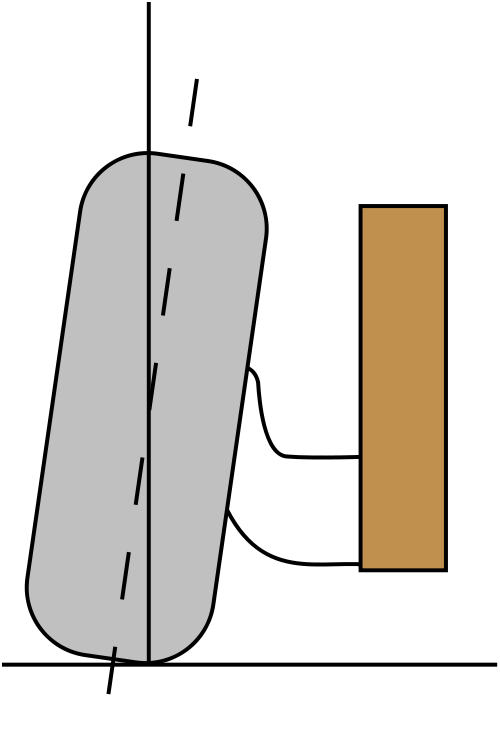When the driver turns the steering wheel, someone with an aerial view would see the angle of the wheels change. If someone were to look at the car head-on and the wheels appeared to be tilted in the same manner, what they would see is a camber angle. Positive camber is a tire angle which leans away from the car at the top of the wheel, and negative camber is the a wheel angle that leans inwards. Most passenger vehicles use a small amount of negative camber.
What is Camber? by Engineering Explained
Why Have Camber?

When a vehicle takes a corner, inertia forces try to keep it moving straight, so weight shifts away from the turning direction. Depending on the tire's grip, the tire's compound, and the amount of forces in action, the sidewall of the tire bends to varying degrees. When the sidewall bends, the amount of surface area the tire contacts is reduced, resulting in an undesired loss of traction. Camber can fight this by putting the tire at an angle that is ready for the sidewall to bend. Because static camber (as opposed to caster) is always a quality of the car, it can reduce grip when little or no forces are being exerted in the directions camber is supposed to counter. Some suspension designs have clever designs that sharpen the camber angle when inertia forces make the vehicle roll (lean during cornering).
Camber's Effect on Tire Wear
Heavily negatively cambered wheels will wear too much on the inside of the tread at all times, while an uncambered wheel will wear down too much on the outside, only as the vehicle takes a corner. A balance of camber, caster, and tire pressure is important for even tire wear.
Adjusting Camber
Camber can be adjusted a number of ways, but the most common aftermarket solution on the front suspension with a strut is to replace the strut-to-steering-knuckle bolts with cam bolts.
Adjusting Camber With Cam Bolts
Note that adjusting camber may alter other angles, such as toe and caster.
